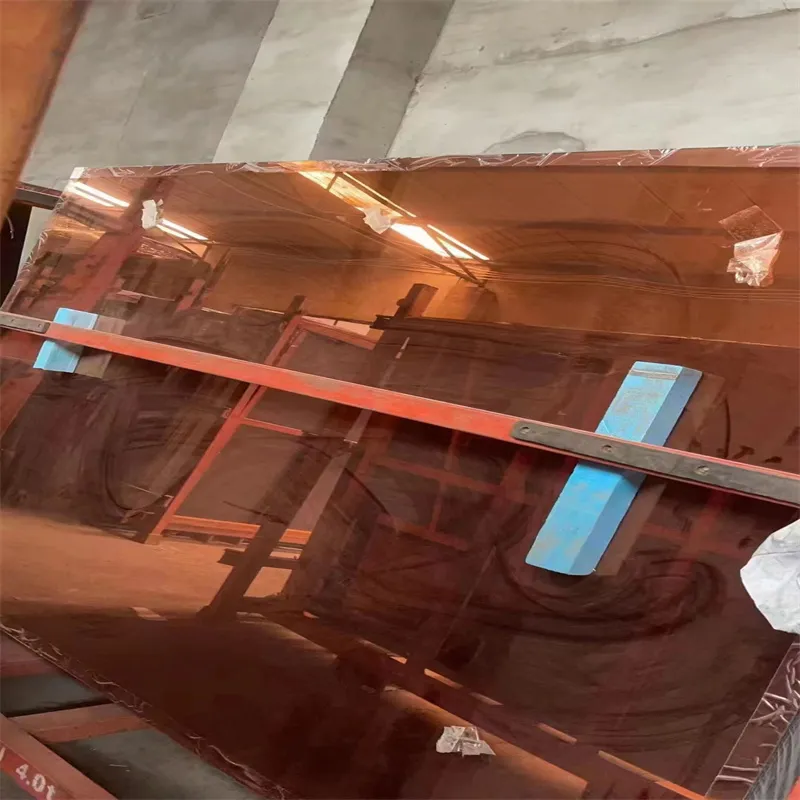Dec . 13, 2024 13:05 Back to list
thin film coating on glass
Thin Film Coating on Glass Enhancing Functionality and Aesthetics
Thin film coating technology has revolutionized various industries by significantly enhancing the properties of materials, particularly glass. Used in everything from architecture to consumer electronics, these coatings are indispensable in modern applications, offering a myriad of functional and aesthetic benefits.
Thin film coatings are created by depositing one or more layers of material onto the surface of glass. The thickness of these films can range from a few nanometers to several micrometers, which allows for precise control over the optical and physical properties of the glass. The deposition techniques include chemical vapor deposition (CVD), physical vapor deposition (PVD), and sputtering, among others. Each method has its unique advantages and is chosen based on the intended application of the coated glass.
Thin Film Coating on Glass Enhancing Functionality and Aesthetics
In addition to energy efficiency, thin film coatings can also enhance the durability of glass. Anti-scratch and anti-reflective coatings are employed to protect surfaces from damage while improving visibility. For instance, eyewear and camera lenses often use anti-reflective coatings to minimize glare and reflections, enhancing visual clarity. In architectural applications, self-cleaning glass coatings utilize photocatalytic properties that enable dirt and grime to be washed away by rainwater, significantly reducing maintenance efforts.
thin film coating on glass

Moreover, the aesthetic enhancements offered by thin film coatings cannot be overlooked. Color-thin film interference is a process that exploits the optical properties of thin films to produce vibrant colors. This is often seen in decorative glass panels, stained glass windows, and artistic installations, where layers of coatings create mesmerizing effects that change with the angle of light. These coatings can be developed in various hues, providing architects and designers with creative freedom to explore new visual dimensions.
Furthermore, thin film coatings are increasingly utilized in the electronics industry, specifically in the manufacture of displays. The rise of smartphones, tablets, and smart TVs has fueled the demand for high-quality displays that provide superior brightness and contrast. Thin film coatings are instrumental in the development of organic light-emitting diodes (OLEDs) and liquid crystal displays (LCDs). For example, anti-fingerprint coatings are critical in preventing smudges on touchscreens, thus maintaining clarity and enhancing user experience.
Another emerging application of thin film coatings is in the field of smart glass technology. This innovation allows glass to change its properties in response to external stimuli such as light and heat. For instance, electrochromic coatings can alter the glass’s tint when an electrical charge is applied, providing privacy and reducing glare while maintaining views. Such adaptable solutions not only enhance comfort but also improve energy management in buildings.
As sustainability becomes a priority for industries and consumers alike, the role of thin film coatings on glass is expected to grow even more significant. Research and development are ongoing to enhance the environmentally friendly characteristics of these coatings. Eco-efficient production processes and the use of sustainable materials are becoming key considerations for manufacturers, aiming to reduce waste and energy consumption in the coating application process.
In conclusion, thin film coatings on glass represent a fascinating intersection of technology, art, and sustainability. By improving energy efficiency, durability, and aesthetics, these coatings are essential in maximizing the utility of glass in various applications. As innovations continue to emerge, we can expect thin film technology to play a pivotal role in shaping the future of glass products, making them smarter, more versatile, and environmentally friendly. Whether enhancing the beauty of a building's façade or improving the performance of consumer electronics, thin film coatings are truly transforming how we interact with glass in our daily lives.
-
Safety and Style with Premium Laminated Glass Solutions
NewsJun.24,2025
-
Reinvents Security with Premium Wired Glass
NewsJun.24,2025
-
Premium Float Glass Line for Modern Architecture
NewsJun.24,2025
-
Low Emissivity Glass for Energy-Efficient Architecture
NewsJun.24,2025
-
High-Performance Insulated Glass Solutions for Modern Architecture
NewsJun.24,2025
-
Elevates Interior Style with Premium Silver Mirror
NewsJun.24,2025
Related PRODUCTS














